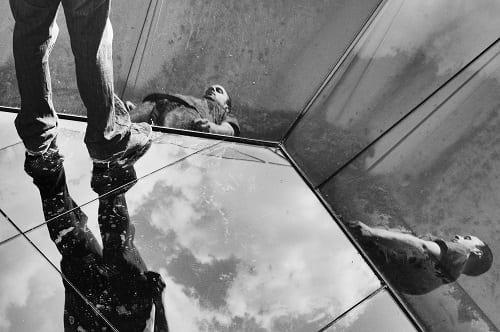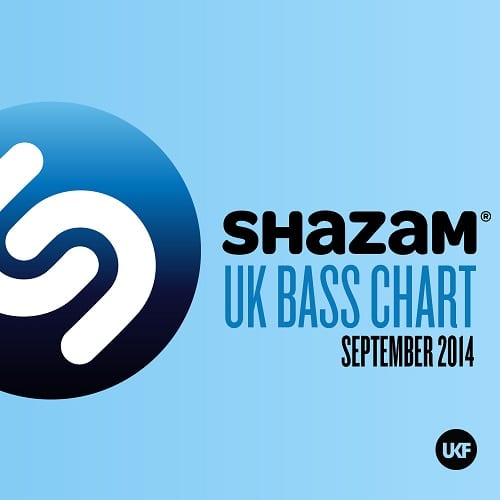We hope your brain is on top form… You will need it as we enter the world of Hybris. This intense interview will be exploring fringe science concepts, production techniques and sound design to prepare you for the incredible new Emergence LP that’s been released this week…
To get to grips with the concept of this LP firstly imagine a box that combines a Flux Capacitor from Back To The Future, parts of the Tardis and a bad-boy sequencer. Hybris might drop a funk break in at the beginning, but there is no way of anyone knowing how that might emerge at the end. That was the basics.
The concept:
“I’ve been interested in chaos theory and non-linear dynamics for a while. Imagine a feedback loop of numbers and equations that is repeated over and over. Then these huge results are plotted on a graph. The graphs can look really interesting as they are being built, but you will never be able to predict what they are going to do based on the original equation. What happens is that at a certain point the behaviour changes almost randomly and this is an emergent property.”
“So with music, when you sit in the studio and you work on something for ever and ever and ever, tweaking and reworking, you keep doing similar repetitive stuff. But at some point with any good tune, something comes out of it and you’re like ‘shit this is something completely different!’ After many re-writes and iterations something clicks and the tune that was supposed to be emerges, but you could never have anticipated that at the start.”
The creation:
“I loved doing this. I made a couple of weird tracks only using FM synthesis exclusively, because I was kind of exploring what I could do. I just decided to use one synthesiser to make a couple of tracks and all of the elements. I sent them to Noisia and they suggested doing an album. That was the spark that made me think I’ve really got to DO something now. Overall it took two-three years to get everything sorted. We actually left off a lot of tunes throughout the process as the idea evolved. It was difficult because even up to six months ago I was making connecting pieces for the album. Then experimenting with track lists for days to create a real journey of an album for the listener, but it was worth it in the end.”
Found sounds: creation and manipulation.
Drum & bass style tracks are always best served with all the precision and technical wizardry that is synonymous with the genre; yet at the same time never losing the soulfulness, dirt and grit that drives a more emotional connection to the music.
Hybris has achieved this balance perfectly throughout the album; there are some incredible basses, intricate drums and immersive pads thoughtfully juxtaposed with found sound recordings, vinyl crackle, noise and ambient tones. It is the inclusion of sounds like this, that allow us as the listeners to be transported by audio alone, to a world where shards of metal form to create a consciousness which is then attacked by a ten tonne pneumatic hammer. The epitome of hard D&B with soul.
Finding found sounds:
“For this album I bought a little zoom recorder and I did tonnes of recording everywhere. All of the found sounds you hear are recorded by me. I recorded everything; coyotes, a Stockholm airport toilet door, traffic, coins, crickets from all over the world. The Prague & DC metro, London Underground and ambience from the countryside. My father-in-law saw me recording these sounds at their house and actually insisted that I record him starting a chainsaw, I ended up stretching it around 1000%. It made its way into a song and turned out to be really creepy.”
“There’s also one song on the LP called Zkouska Siren, which means test siren. They do it every Wednesday in Prague at noon. Before it starts a deep voice says ‘zkouska siren, zkouska siren’ so I recorded that guy and the siren that plays. I went all-out with the found sounds and tried to use them for everything from percussion, to ambiences, to straight up leads in some cases. That was a huge development for me production wise, just integrating that stuff.”
Manipulation:
“I use Paul Stretch which is free. It allows you to stretch things insanely long. But to be honest a lot of my found sounds I use pretty raw because after a little filtering and delay most sounds are unrecognisable. Then in some cases sounds just worked so I left them raw, if they are your own samples you can use them with no guilt.”
Ambience:
“I love my white noise and I love crackle. 5 dollar deposit casino. Sometimes I like crackle over the whole tune. Using white noise with notch filters and a lot of ambient recordings is cool. Sometimes I even sample nothing and it sounds like something. To be honest I felt that my old tunes sounded a little dry, I wanted this album to have an organic feel, to make it sound crunchy and natural in some way. It’s a great way to get contrast in a track.”
Creating drums & basses
What’s really clever about this LP is that if you can grasp the macro concept, when we explore the micro details of drums, percussion and bass synthesis you can see the conceptual ideas are filtered down into the each individual sound. For instance Hybris does use breaks in his tracks but they become so manipulated at the end that you never could have predicted the out come. Once again returning to the emergence idea in the smaller details.
When it comes to more experimental drum & bass Hybris is able to push the limits and explore the desolate landscapes of electronic music, but the moment just before you feel lost in a the multi-verse there will be a dash of a classic breaks or hit of an old school rave style stab just to tip the hat of familiarity without being jarring and keeping the tracks danceable and accessible.
Drums:
“Most of them are synthesised or found sounds, I think on So Yum and Call Me Chuck pretty much all of the drums are synthesised. Even before I got the recorder, I was always just making drums out of things that shouldn’t be drums. People were like ‘how do you do that?’ but in my head I just took a water sample and made a drum, because anything can be anything really. One good thing about synthesising drums is that if you come up with something interesting, it’s really easy to make variations because you have full control over the sound.”
“I do use a lot more breaks than you can really hear. In tracks such as Subversion and Timeloop there are a couple of classics but they are so mangled that they will be a remote detail by the time the tune is finished.”
“I process my drums as audio, I’m not the type of person who will find three sounds and then immediately separate them. I’m on a ‘do it as you need to’ basis, so if two sounds are good layers, without the transients perfectly aligned, then sometimes the double snap, knuckle crack sound is cool. But most of the time I will try and be accurate to the millisecond. I really shape the decays of sounds but only as I need to, I don’t immediately just dissect sounds because I might lose stuff I want. The same goes with multi-band compression and processing, I’ll only use it if I want to accomplish something very specific.”
“I remember working with Noisia on Crystalline and I was hacking up some robot samples to make a drum beat out of micro snippets of sounds, really getting in there manually with audio. Thijs said ‘do you do things like this all the time? Because that’s tedious man, I would never do that shit!’”
Basses:
“I don’t focus too much on the sub at the beginning, I’ll use a raw synth sound maybe through a vocoder or other modulation, then put a clean compressed sine wave underneath to keep it consistent or sometimes a little movement to mimic the mid range. I like the bass line to talk and have some personality, or growl, or articulation. I like to think of the bass a weird creature, so I don’t want to squeeze sub bass out of a sound and ruin its articulation.”
“People are usually shocked at the fact that I don’t resample much. Usually I just make sure the sound is good to start with. Sometimes it really is just about putting in the hours. I don’t really have any tips or tricks just keep working on it. If its not working I take a break and have a beer, then go back and keep working on it, eventually something good will emerge.”
“One sound that I am proud of is the intro for Zkouska Siren, the sound that morphs between from pad to become the bass line, that was originally a sample of a door in a hostel in the Czech Republic. The grittiness was from the original sample. I stood there for like 15 minutes sampling that door.”
“I am a big believer that any sound can be anything. It’s an interesting exercise to sample a whole bunch of shit and make a tune from that. You can end up with really interesting tunes that way.”
Wow… The genre defying, mind bending Emergence LP has the depth to satisfy the most scientific of drum & bass head. The combination of stunning field recordings, audio manipulation techniques and a globe-spanning library of found sounds will transport you to the edge of the stratosphere to glimpse at ethereal worlds, only to be slammed back to down earth by the animated creatures and hybrid monsters that Hybris calls bass.
It’s deep, it bangs, he sampled coyotes and Noisia signed it. Job done.


